To your health! Expanding opportunities
For various reasons - congenital, the consequences of playing sports or accidents, chronic diseases, age - some people experience difficulties in everyday life. Fortunately, the future is already near - there are projects aimed specifically at helping people.
In the post - about glasses for the blind, about a spoon for people with Parkinson's disease, about exoskeletons and other devices.
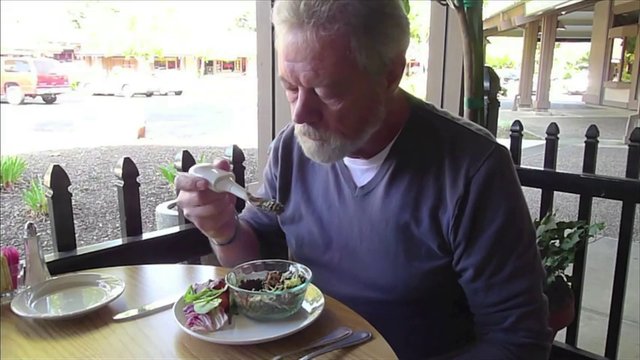





For people with Parkinson’s disease, a spoon from Liftlabs has been created that simplifies the process of eating at times. The device compensates for tremors, so that food from a spoon does not fall out - because it is in a relatively stable position.

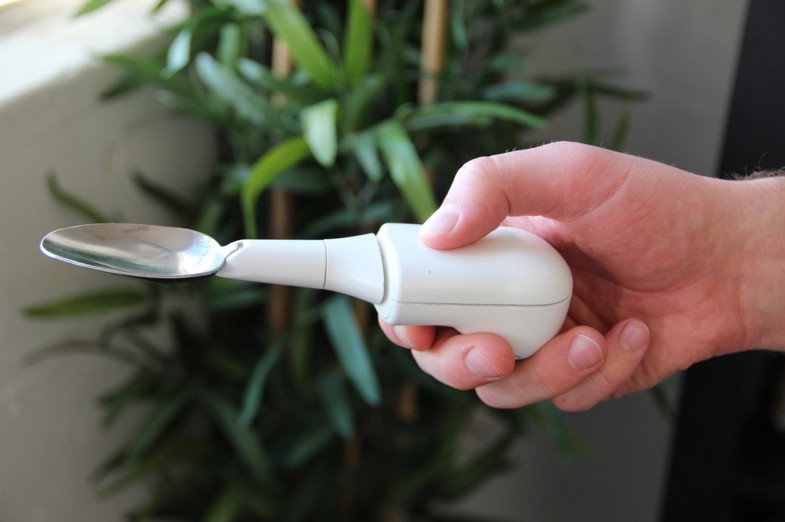
What about without exoskeletons? Ekso Bionics is for people with paralysis of the lower extremities. A mechanical suit allows you to literally get up and walk. 2012 video.

This is an automatic wheelchair control system that the father remade for his two-year-old son with spinal muscular atrophy, which prevents him from doing anything at all. This post was dedicated to the Habr .

Here is the chair itself in action.
How to drive a car? This device allows you to turn, switch speeds, add gas and brake with just one hand. What is very important - it has a flexible configuration, allowing the fate of the coordination and power features of the user. Developed by a joystick by specialists from the Institute of Biomechanics of Valencia.

A very important topic - prosthetics - deserves not even a separate publication, but their whole cycle. Today I will write about one of the new products - this is a bionic prosthesis that returns a sense of touch . Successful tests have already been completed: previously, the test subject was implanted with microelectrodes to nerves in the forearm, and sensors transmitting electrical impulses were installed in the fingers of the prosthesis. As a result, you can feel the shape and hardness of the object.

30% of older people over 65 fall once a year or more, and more than half of them cannot independently rise and call for help. Moreover, in 7% of cases, the fall ends with fractures, about 10% - with injuries to the head, internal organs or death. In Russia, the Life Button has been struggling with this for several years: pressing the button sends a message about the owner’s location to the Dispatch Center, after which the necessary services are called to the address. Relatives and neighbors are also notified for quick assistance. There are several solutions, including home buttons, emergency button phones and bracelets.
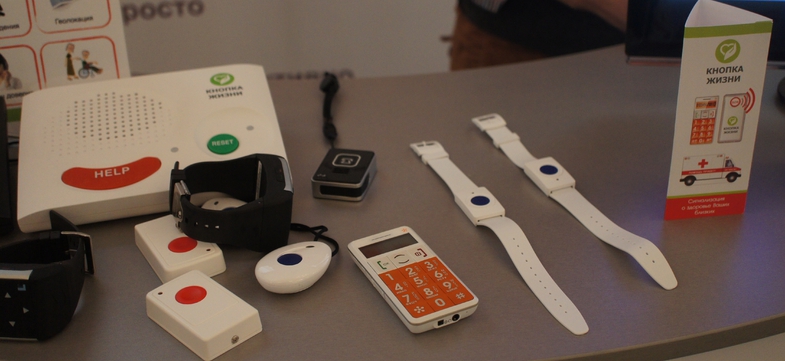
And this liquid level indicator was made in Ukraine specifically for the blind grandfather. They made it practically from improvised means, and the thing turned out to be convenient - as they say, grandfather liked it.Everything ingenious is simple.
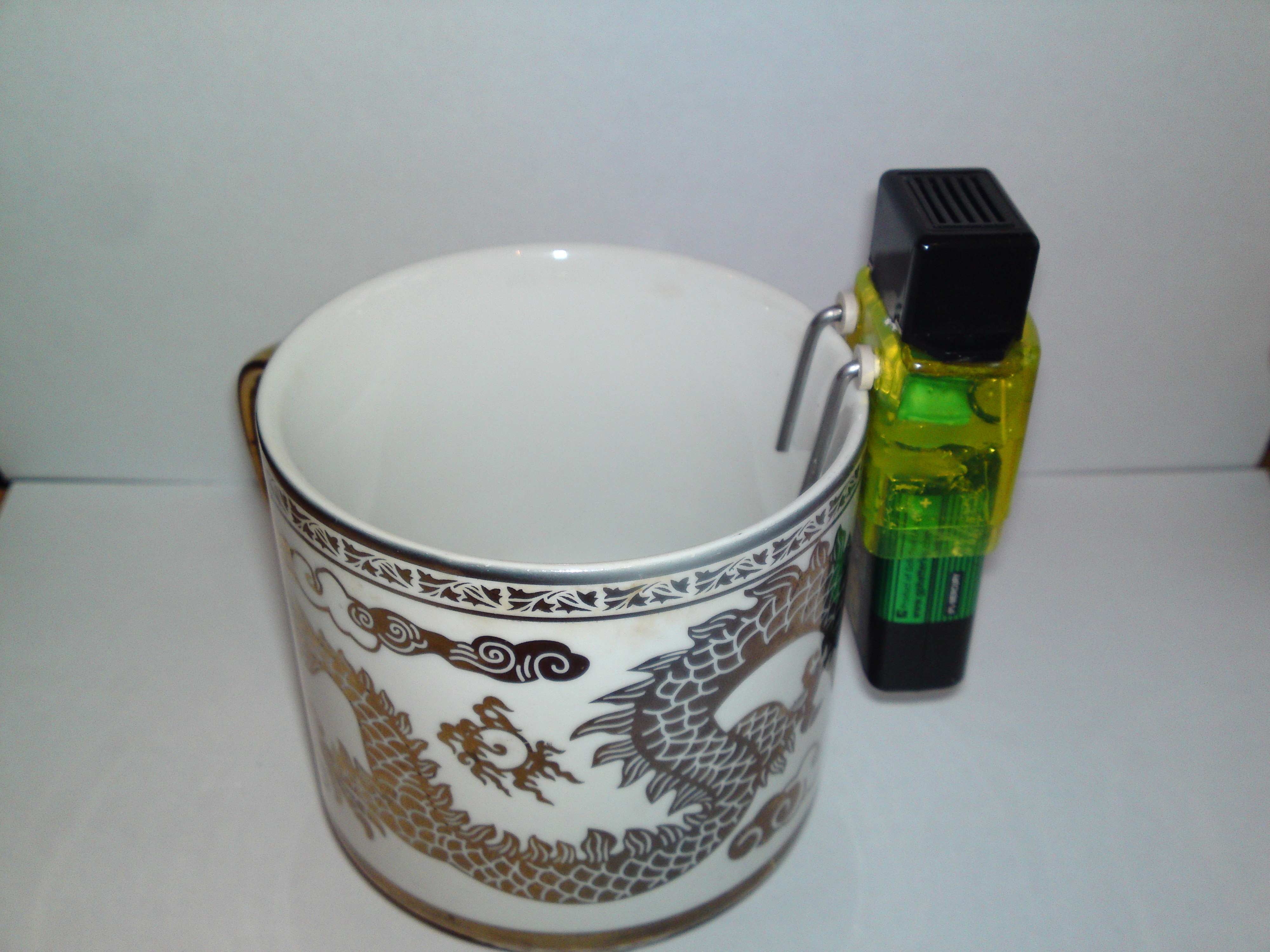
In early 2013, CES introduced smart watches specifically designed for hearing impaired people. The uniqueness of Moneual Smart Care is that they hear disturbing sounds like a crying baby, a fire alarm or an air-raid siren, for example, and alert the owner of them by vibration and a message on the display. In addition, they are able to call the rescue service on behalf of the user.

This exoskeleton will help recover from a severe injury or accident. The Titan Arm also increases arm strength to 18 kg.
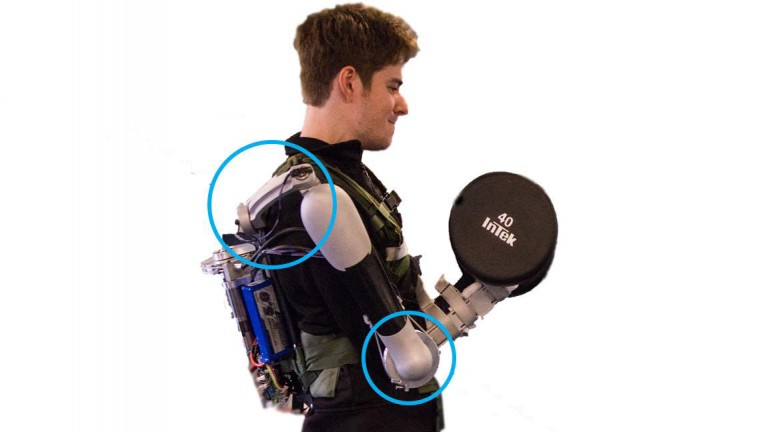
Enable Talk helps dumb people with people who don’t understand sign language. Gloves equipped with sensors translate sign language, and a miniature sound device pronounces what was said by gestures. This project of Ukrainian students won first place at the Microsoft Imagine Cup competition in 2012 .
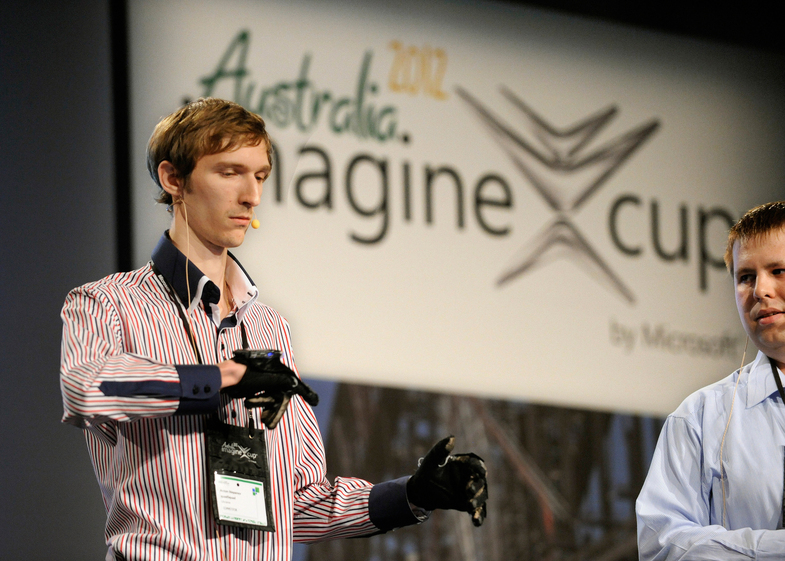
At CES 2014 , OrCam glasses were introduced to help blind people. The glasses are equipped with a camera that recognizes text, which is then voiced; they also recognize traffic signals, colors and people. Such a gadget can partially replace a guide on the street.

A similar project since 2010 has been developed by the Russian company Oriense .

The B-Touch by Zhenwei You phone is endowed with the sound reproduction of books, GPS, a built-in camera based on object recognition, and has all the functions of a standard phone. Only instead of the display - a system based on Braille!

BrainPort is another system for helping the blind: it allows you to see with ... language. The device transforms the signals from the camera mounted on the user's head into electrical impulses that enter the tongue.
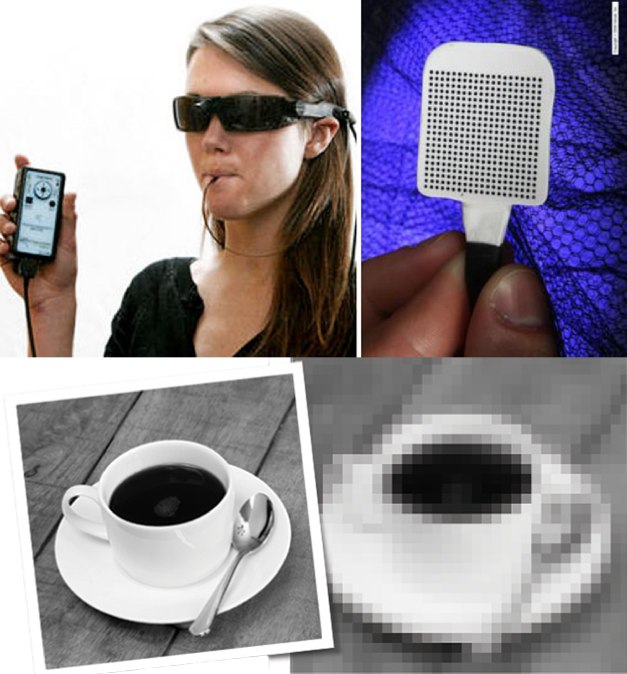
Another device with a display based on the Braille is Braille E-Book. Books for the blind are very heavy, voluminous and expensive, and this e-book allows you to save a lot.

This futuristic glove allows you to read braille. The user hears text in the headphone. Designed for visually impaired people who do not know this font - for example, for those who have lost all or part of their vision as a result of an injury.

This is interesting:
To your health! Wearable devices in sports and medicine
The history of smart watches
How close are we to creating a full-fledged cyborg?
In the post - about glasses for the blind, about a spoon for people with Parkinson's disease, about exoskeletons and other devices.






For people with Parkinson’s disease, a spoon from Liftlabs has been created that simplifies the process of eating at times. The device compensates for tremors, so that food from a spoon does not fall out - because it is in a relatively stable position.


What about without exoskeletons? Ekso Bionics is for people with paralysis of the lower extremities. A mechanical suit allows you to literally get up and walk. 2012 video.

This is an automatic wheelchair control system that the father remade for his two-year-old son with spinal muscular atrophy, which prevents him from doing anything at all. This post was dedicated to the Habr .

Here is the chair itself in action.
How to drive a car? This device allows you to turn, switch speeds, add gas and brake with just one hand. What is very important - it has a flexible configuration, allowing the fate of the coordination and power features of the user. Developed by a joystick by specialists from the Institute of Biomechanics of Valencia.

A very important topic - prosthetics - deserves not even a separate publication, but their whole cycle. Today I will write about one of the new products - this is a bionic prosthesis that returns a sense of touch . Successful tests have already been completed: previously, the test subject was implanted with microelectrodes to nerves in the forearm, and sensors transmitting electrical impulses were installed in the fingers of the prosthesis. As a result, you can feel the shape and hardness of the object.

30% of older people over 65 fall once a year or more, and more than half of them cannot independently rise and call for help. Moreover, in 7% of cases, the fall ends with fractures, about 10% - with injuries to the head, internal organs or death. In Russia, the Life Button has been struggling with this for several years: pressing the button sends a message about the owner’s location to the Dispatch Center, after which the necessary services are called to the address. Relatives and neighbors are also notified for quick assistance. There are several solutions, including home buttons, emergency button phones and bracelets.

And this liquid level indicator was made in Ukraine specifically for the blind grandfather. They made it practically from improvised means, and the thing turned out to be convenient - as they say, grandfather liked it.Everything ingenious is simple.

In early 2013, CES introduced smart watches specifically designed for hearing impaired people. The uniqueness of Moneual Smart Care is that they hear disturbing sounds like a crying baby, a fire alarm or an air-raid siren, for example, and alert the owner of them by vibration and a message on the display. In addition, they are able to call the rescue service on behalf of the user.

This exoskeleton will help recover from a severe injury or accident. The Titan Arm also increases arm strength to 18 kg.

Enable Talk helps dumb people with people who don’t understand sign language. Gloves equipped with sensors translate sign language, and a miniature sound device pronounces what was said by gestures. This project of Ukrainian students won first place at the Microsoft Imagine Cup competition in 2012 .

At CES 2014 , OrCam glasses were introduced to help blind people. The glasses are equipped with a camera that recognizes text, which is then voiced; they also recognize traffic signals, colors and people. Such a gadget can partially replace a guide on the street.

A similar project since 2010 has been developed by the Russian company Oriense .

The B-Touch by Zhenwei You phone is endowed with the sound reproduction of books, GPS, a built-in camera based on object recognition, and has all the functions of a standard phone. Only instead of the display - a system based on Braille!

BrainPort is another system for helping the blind: it allows you to see with ... language. The device transforms the signals from the camera mounted on the user's head into electrical impulses that enter the tongue.

Another device with a display based on the Braille is Braille E-Book. Books for the blind are very heavy, voluminous and expensive, and this e-book allows you to save a lot.

This futuristic glove allows you to read braille. The user hears text in the headphone. Designed for visually impaired people who do not know this font - for example, for those who have lost all or part of their vision as a result of an injury.

This is interesting:
To your health! Wearable devices in sports and medicine
The history of smart watches
How close are we to creating a full-fledged cyborg?
